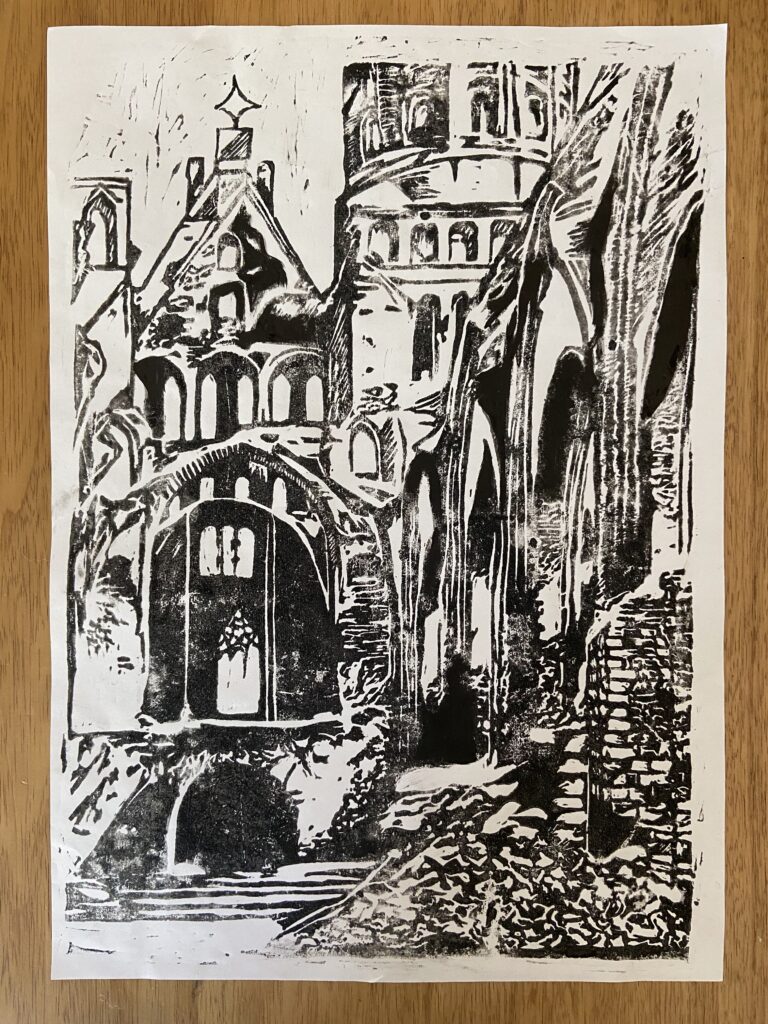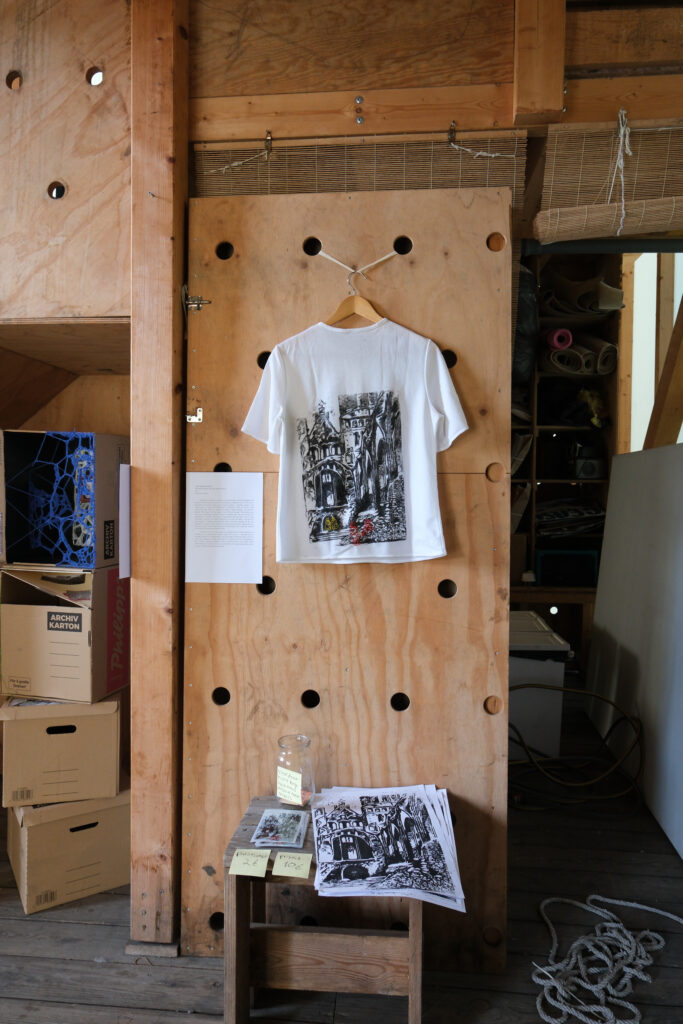Alisa Maiarchuk-Dysa
We Used to Hang Out Near Kant’s Grave
Lino print on fabric
This piece is based on a memory my grandmother shared of spending time with her friends among the ruins of the Königsberg Cathedral in the 1970s, next to the grave of Immanuel Kant. In my research project, I used the concept of the “third space” to argue that Kaliningrad’s marginality within the Soviet Union allowed for new settlers to experience a distinct regional identity – one not fully aligned with either the Soviet centre or with Western Europe. This hybridity was not only a geopolitical condition but also something felt at the level of daily life, especially by migrants who, like my grandmother, did not arrive with a strong ideological mission but rather encountered the past informally, through their environment. It suggests that material contact with the remnants of the past, especially in regions where erasure and preservation coexisted, created space for alternative forms of historical awareness and belonging, even within the confines of an officially homogenising state project.
To express this historical complexity, I created a linocut print that shows the cathedral as my grandmother Natalia would have seen it — damaged but still standing. Printed on crimplene fabric and embroidered with faint outlines of Soviet youths and imagined German churchgoers, the figures reflect my reimagining of her everyday, unspoken encounter with the layered history of the place. These aren’t ghosts in a mystical sense, but quiet echoes of how past and present coexist in spaces without needing to be explained.



